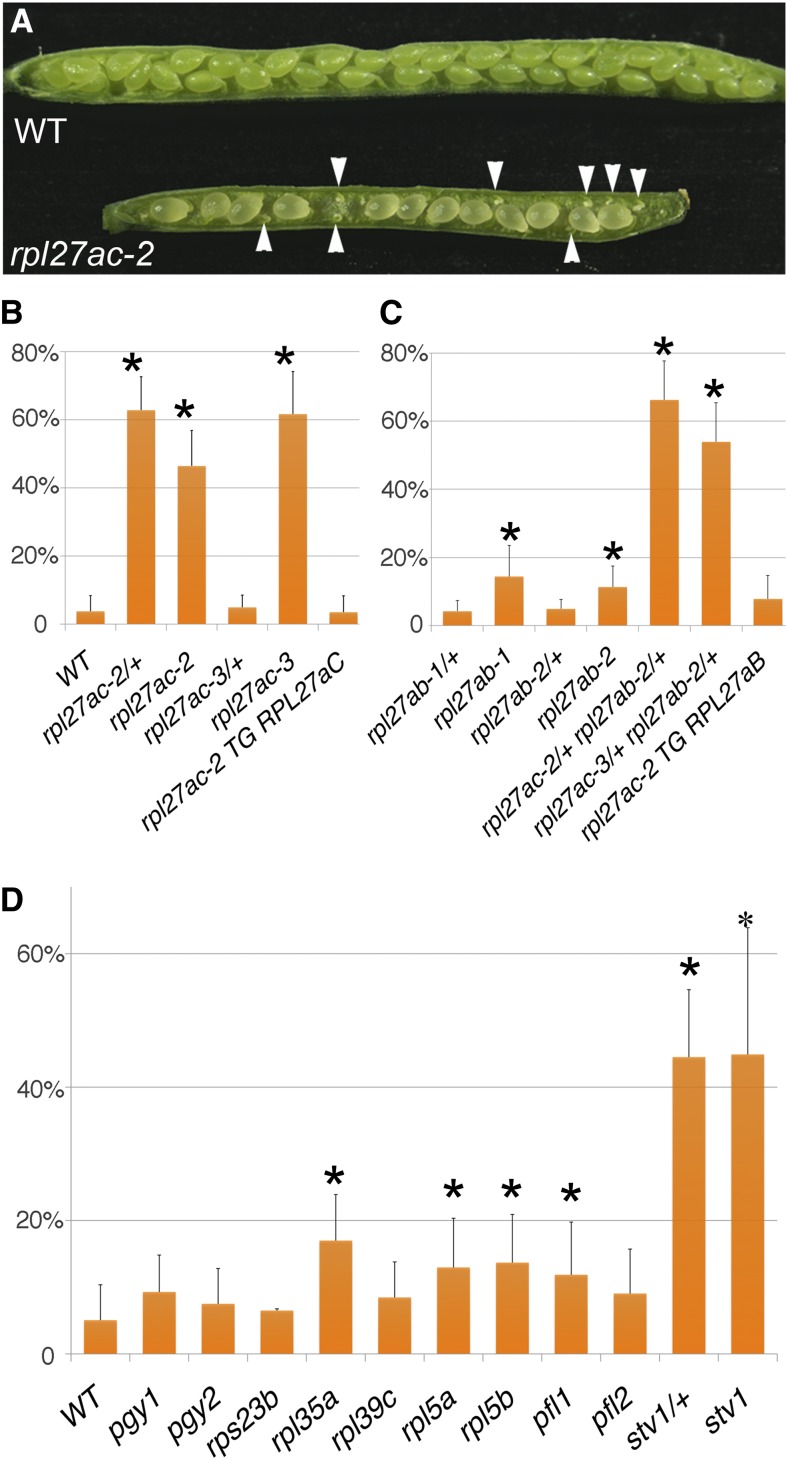Figure 2.
Fertility defects in rpl27a and ribosomal protein mutants. A, Wild-type (WT; top) and rpl27ac-2 (bottom) open siliques, with defective ovules in the mutant marked (arrowheads). B, Percentage of defective ovules in siliques of the wild type (n = 581), rpl27ac-2/+ (n = 565), rpl27ac-2 (n = 521), rpl27ac-3/+ (n = 587), rpl27ac-3 (n = 579), and rpl27ac-2 carrying the transgene RPL27aC:RPL27aC (rpl27ac-2 TG RPL27aC; n = 824). C, Percentage of defective ovules in siliques of rpl27ab-1/+ (n = 572), rpl27ab-1 (n = 549), rpl27ab-2/+ (n = 626), rpl27ab-2 (n = 548), rpl27ac-2/+ rpl27ab-2/+ (n = 612), rpl27ac-3/+ rpl27ab-2/+ (n = 594), and rpl27ac-2 carrying the transgene RPL27aB:RPL27aB (rpl27ac-2 TG RPL27aB; n = 932). D, Percentage of defective ovules in siliques of the wild type (n = 690), pgy1 (n = 603), pgy2 (n = 598), rps23b (n = 630), rpl35a (n = 604), rpl39c (n = 601), rpl5a (n = 532), rpl5b (n = 562), pfl1 (n = 556), pfl2 (n = 585), stv1/+ (n = 668), and stv1 (n = 560). Error bars are the sd (Student’s t test, *P < 0.05). [See online article for color version of this figure.]

